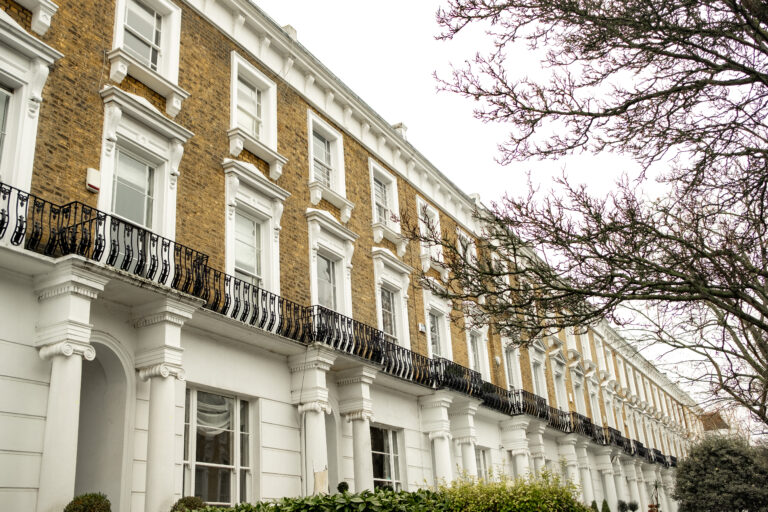London Property Market in 2022
Whilst the South East of England recorded one of the biggest price increases nationally – in part due to the pandemic’s “Race for Space” and various urban regeneration projects taking shape in the region – the London property market slowed somewhat, experiencing slightly lower property price growth than other areas of the UK.
However, London has always been a traditionally popular property market for homebuyers, both domestically and internationally, due to the city’s position as an economic, financial, cultural and entertainment hub and the enviable lifestyle it provides.
Throughout 2022, the London property market proved to be relatively safe and extremely robust in terms of property prices, demand and transactions despite several factors – such as the governments mini-budgets, the rising cost of living and an exponential increase in interest rates – putting more and more pressure on UK household finances. This is because the market is dominated by cash buyers, with Knight Frank data revealing that 52% of purchasers fell into this category in the first three months of 2022 and therefore were less susceptible to the increasing interest rates.
Prime Central London property is also traditionally popular with international homebuyers due to long-term capital appreciation, desirability of living in the capital and the lifestyle it provides. In fact, Bloomberg reported that in 2022, 48% of all central London property purchases came from overseas buyers whilst domestic homebuyers favoured Greater London. It’s these pool of buyers that give the London market its trademark resilience.
The year concluded with the average central London property prices across London falling by -1.3% during the final quarter of 2022 after months of consecutive increases, leaving them 1.5% higher than they were in 2021 and 3.9% above their pre-pandemic level according to Savills.
The rental market in London also finished the year with 20% growth when compared to 2021, with some of the highest levels of tenant demand across England and Wales in the last quarter of 2022. Earlier this year, Foxtons reported that 2022 had 32% fewer rental properties on the market in the capital than 2021 while demand for property remained high, finishing the year 14% higher. This saw positive growth in average rents across the city.

London Supply & Demand
Demand in the prime London property market remained high throughout 2022, with Knight Frank figures demonstrating a 16.2% increase in the number of exchanges in November compared to the same month in 2021, and a 15% increase from the five-year average.
This shows no signs of slowing down, with the number of prospective buyers registering in the UK being 10% above the five-year average and the number of offers accepted being 42% higher in the first few months of 2023.
This is echoed by data from Foxtons’ annual London Report, which revealed a 59% increase in demand for London property last year with a particular interest in new build properties driven largely because of their increased energy efficiency and apartments, with agreed sales now 23% above 2019 figures.

The Rental Market in London
What’s even more impressive than the increasing property prices and demand is the positive outlook for the rental market in London.
With demand outweighing supply, rental price growth remains at a record high with the average rent rising by 16.1% year-on-year in October 2022 according to Rightmove – the biggest annual increase on record. The property website also recorded average monthly rents in the capital exceeding £2,500 for the first time in the first three months of this year.
Property market experts Savills analysed the UK rental market and found that London experienced the largest annual rental growth at 14.2% in March 2023.
LONDON PROPERTY MARKET FORECAST 2023
The UK property market is making great strides in recovering from the economic impact of the global pandemic, with many five-year forecasts anticipating steady property price growth and buyer demand to remain strong across the UK in general.
At the time of writing our 2023 UK property market forecast, London’s prime property market had experienced a lower property price growth than the rest of the UK. However, as we predicted, the market has stabilised substantially since then and looks set to outperform the mainstream market over the coming months due to its trademark resilience and the unwavering desirability of living in London.
Savills is predicting Prime Central London property to showcase this resilience with a 13.5% five-year compound price growth between now and the end of 2027, presenting a fantastic opportunity for homebuyers with a long-term outlook.
Knight Frank estimates also predict the central London property sales market to lead property price growth in the UK with an increase by up to 8.1% over the next five years, outperforming Greater London and the rest of the UK’s 2.5% predicted growth.
The future of London’s rental market also looks bright, with JLL predicting that prices may increase by 15% by 2025, with 3% growth in 2023 alone.
Simon Howard, group sales director at SevenCapital, said: “Consistently recognised as a top global centre for finance, higher education and cultural appeal, the London property market continues to show its resilience in 2023 in the face of economic and political challenges by drawing in property buyers from across the UK and globally.
“With forecasts for the next five years indicating that the London property market shows no signs of slowing down, it continues to present an exciting opportunity for buyers to purchase property in the UK’s capital city.”
Property for Sale in London
SevenCapital have recently secured a four-year £258 million development loan to fund the delivery of a 462-home prime residential-led scheme in Kensington, West London. If you’re interested in buying property in central London and want to keep up to date on our upcoming residential development, sign up to receive all the latest news here:






